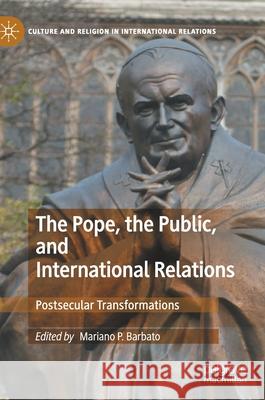The Pope, the Public, and International Relations: Postsecular Transformations » książka
topmenu
The Pope, the Public, and International Relations: Postsecular Transformations
ISBN-13: 9783030461065 / Angielski / Twarda / 2020 / 209 str.
The Pope, the Public, and International Relations: Postsecular Transformations
ISBN-13: 9783030461065 / Angielski / Twarda / 2020 / 209 str.
cena 602,40
(netto: 573,71 VAT: 5%)
Najniższa cena z 30 dni: 539,74
(netto: 573,71 VAT: 5%)
Najniższa cena z 30 dni: 539,74
Termin realizacji zamówienia:
ok. 22 dni roboczych.
ok. 22 dni roboczych.
Darmowa dostawa!
Kategorie BISAC:
Wydawca:
Palgrave MacMillan
Seria wydawnicza:
Język:
Angielski
ISBN-13:
9783030461065
Rok wydania:
2020
Wydanie:
2020
Numer serii:
000506958
Ilość stron:
209
Waga:
0.42 kg
Wymiary:
21.01 x 14.81 x 1.42
Oprawa:
Twarda
Wolumenów:
01
Dodatkowe informacje:
Wydanie ilustrowane











